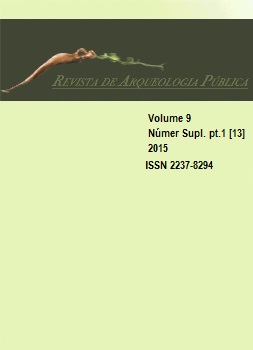Resumo
Este texto discute algumas apropriações de Filipe da Macedônia e Alexandre Magno realizadas pelos governos macedônio e grego a partir da segunda metade do século XX. Em particular, debate como estes governos, cada qual a seu modo, se serviram das figuras dos dois soberanos com propósitos nacionalistas.
Referências
ANDERSON, B. Comunidades imaginadas: reflexões sobre a origem e a difusão do nacionalismo. São Paulo: Companhia das Letras, 2008.
ANDRONIKOS, M. Vergina: The Royal Tombs and the Ancient City. Ekdotike Athenon S.A., Athens, 1984.
BRUNNBAUER, V. Serving the Nation: Historiography in the Republic of Macedonia (FYROM) after Socialism. In Historien, vol. 4, 2003-4, pp. 161-182.
BURSTEIN, S. The Tomb of Philip II and the Succession of Alexander the Great. In: Echos Du Monde Classique/Classical Views, vol. 26, 1982, pp. 141 – 163.
CATROGA, F. Memória, história e historiografia. Coimbra: Quarteto, 2001.
DAHMEN, K. The Legend of Alexander the Great on Greek and Roman Coins. New York: Routledge, 2007.
DANFORTH, L. Ancient Macedonia, Alexander the Great and the Star or Sun of Vergina: National Symbols and the Conflict between Greece and the Republic of Macedonia. In ROISMAN, J. & WORTHINGTON, I. A companion to Ancient Macedonia. Oxford: Blackwell, 2010, pp. 572-598.
ELEZOVIC, A. Manolis Andronikos: Greece’s National Archaeologist. Clio’s Purple and Gold, Vol. 1, 2011, pp. 54-66.
HALBWACHS, M. A memória coletiva. São Paulo: Vértice, 1990.
HAMMOND, N. The Royal Tombs at Vergina: Evolution and Identities. The Annual of the British School at Athens, vol. 86, 1991, pp. 69—82.
HARTOG, F. Regimes de Historicidade. Presentismo e Experiências do Tempo. Belo Horizonte: Editora Autêntica, 2013.
HOBSBAWM, E. J. Nações e nacionalismo desde 1780: programa, mito e realidade. Rio de Janeiro: Paz e Terra, 2008.
KOSELLECK, R. Futuro Passado. São Paulo: Contraponto, 2006.
LIAKOS, A. Hellenism and the making of Modern Greece. In ZACHARIA, K. (ed.). Hellenisms: culture, identity, and ethnicity from antiquity to modernity. Aldershot, England; Burlington: Ashgate, 2008.
MACKRIDGE, P. Cultural Difference as National Identity of Modern Greece. In ZACHARIA, K. (ed.). Hellenisms: culture, identity, and ethnicity from antiquity to modernity. Aldershot, England; Burlington: Ashgate, 2008.
NORA, P. Recent history and the new dangers of politization. In Eurozine, 24/11/2011. Disponível em: http://www.eurozine.com/articles/2011-11-24-nora-en.html. Acesso: 03/07/2014.
NORA, P. Entre memória e história: a problemática dos lugares. In. Projeto História, São Paulo (10), 1993, pp. 7-29 (Originalmente in: Les Lieux de memórie, pp. XVIII-XLII. Trad. Yara Aun Khoury)
WHITMARSH, T. Alexander’s Hellenism and Plutarch’s Textualism. In: The Classical Quarterly. New Series, Vol. 52, no 1, 2002, pp. 174-192.
A Revista Arqueologia Pública utiliza a licença do Creative Commons (CC), preservando assim, a integridade dos artigos em ambiente de acesso aberto.

